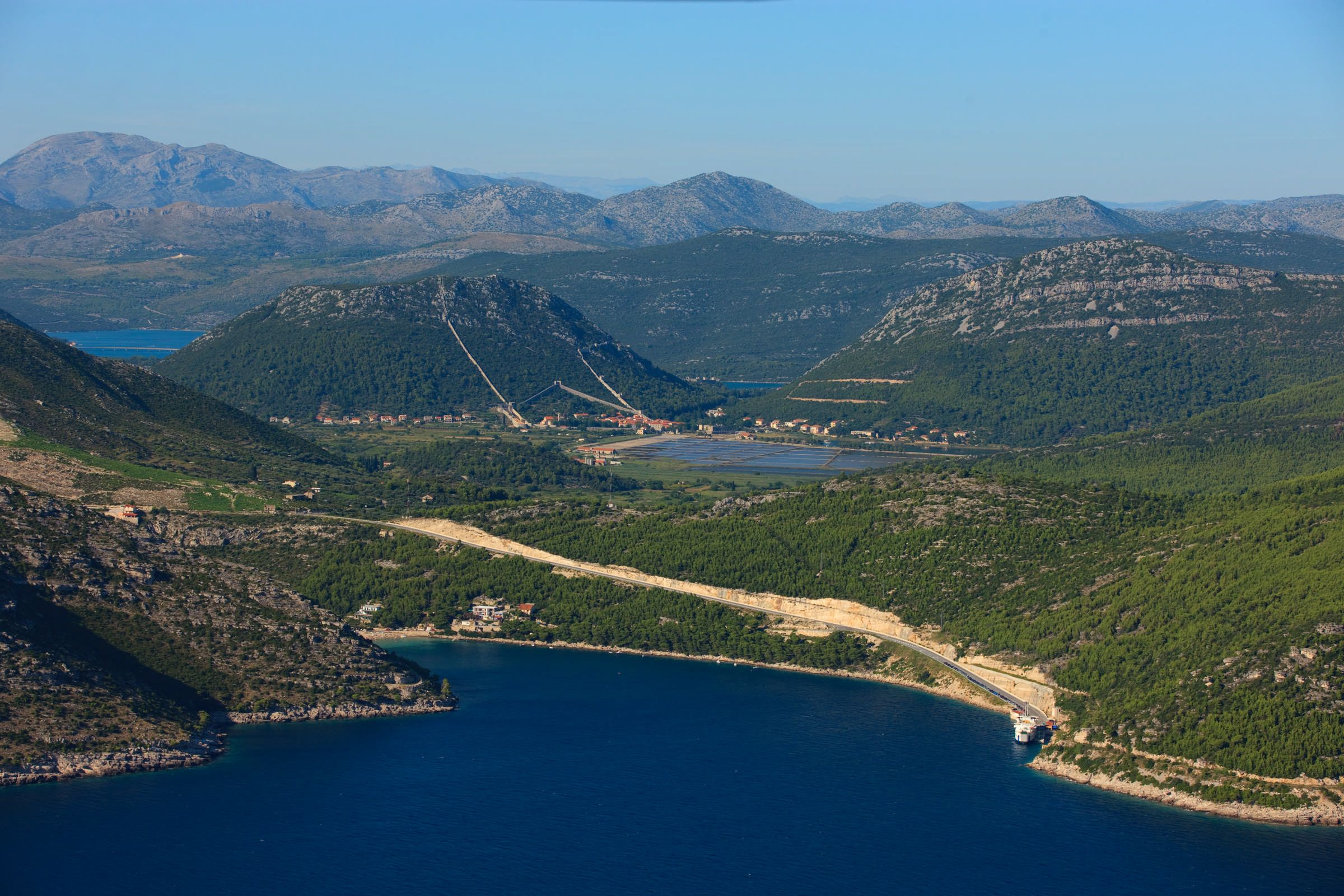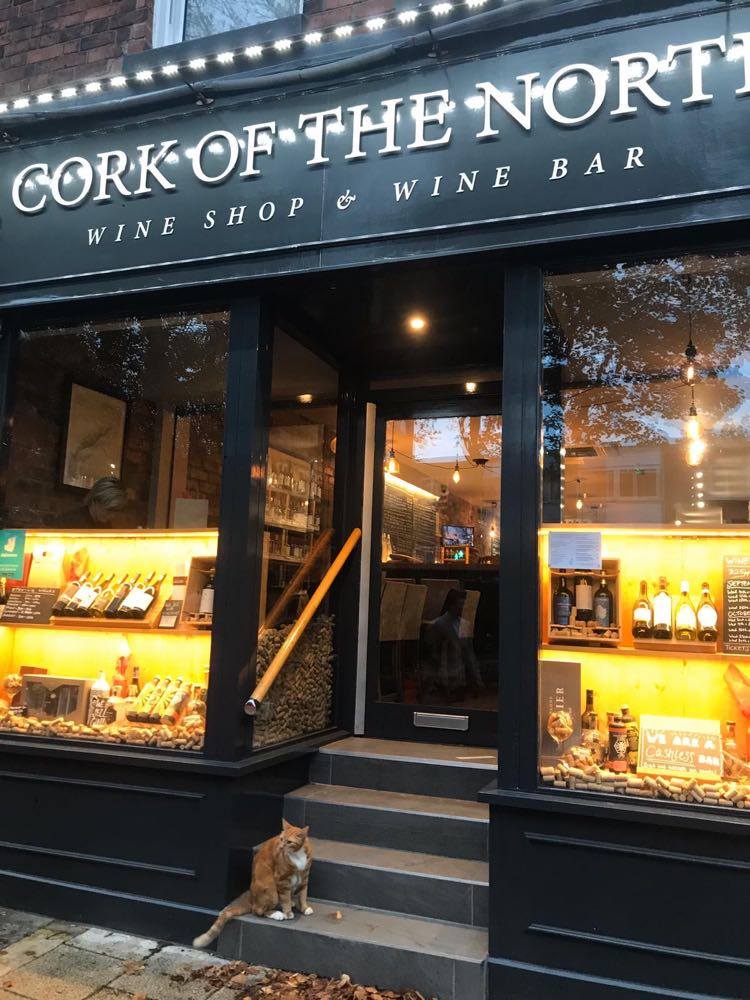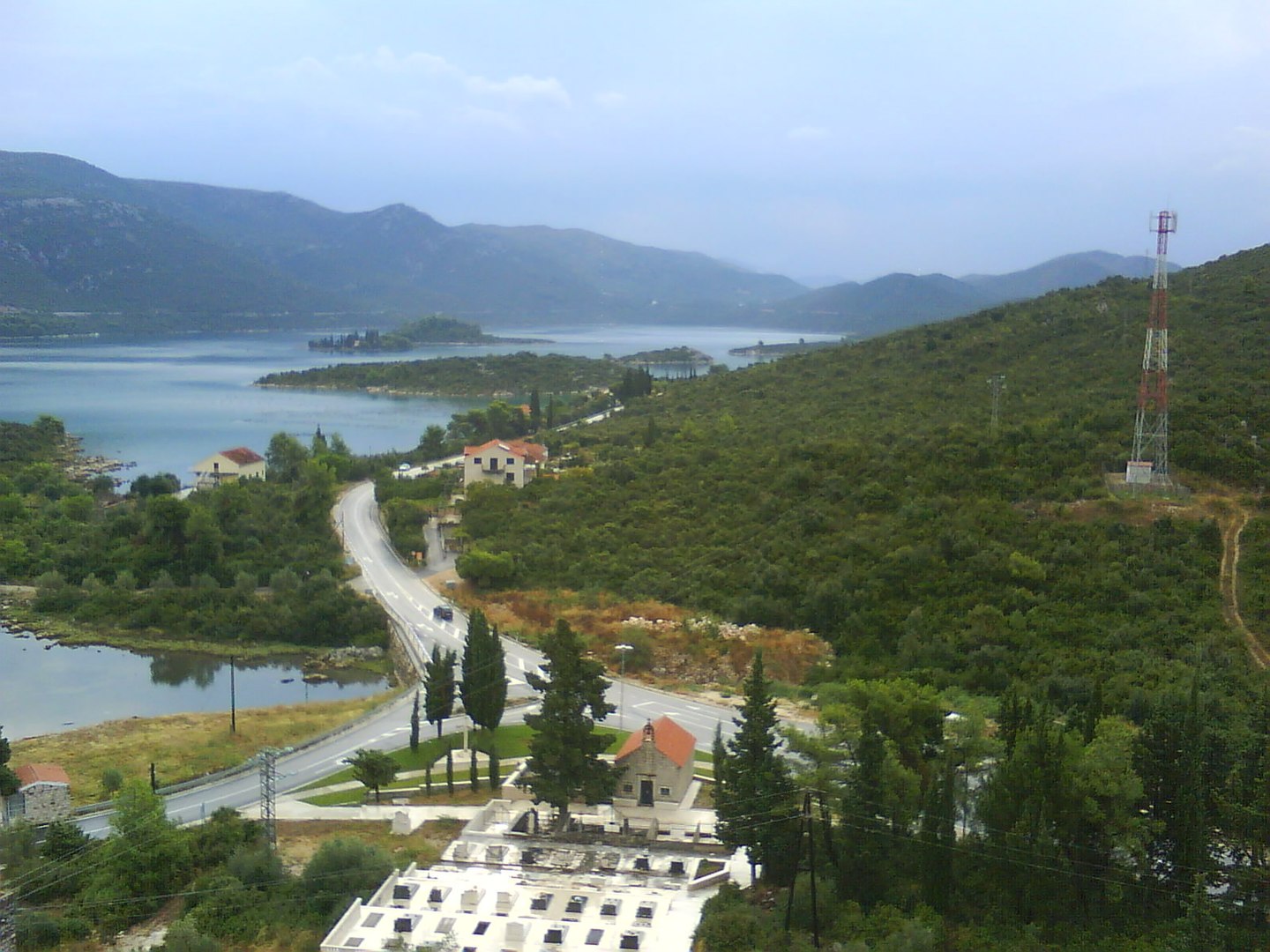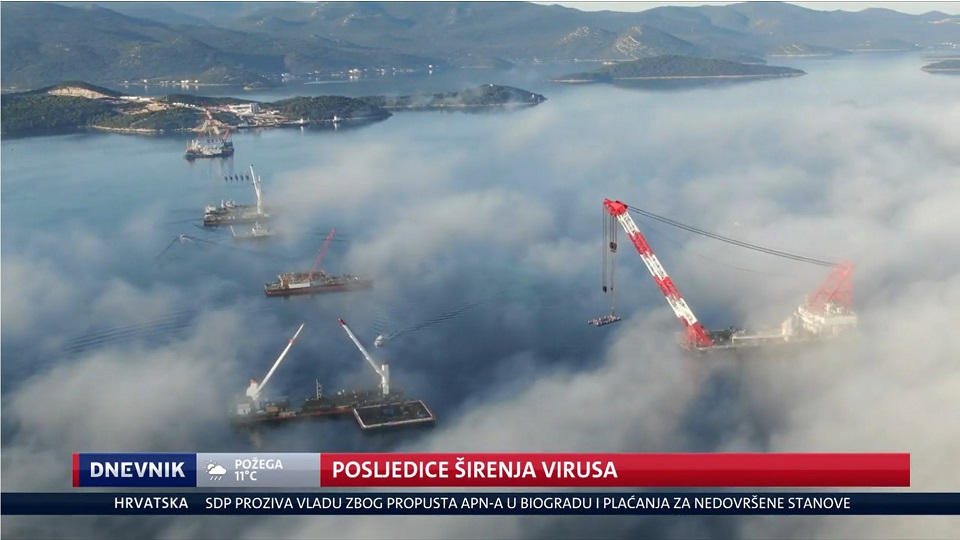VIDEO: Peljesac Bridge Construction Update by EdoStuff
November 15, 2020 - A Peljesac Bridge construction update, brought to you by Split-based videographer EdoStuff.
Despite the ongoing coronavirus pandemic, works on the construction of the Peljesac Bridge are in full swing. Works should be completed in a year and a half, and the bridge will be 2.4 kilometers long and 55 meters high.
The contractor of the bridge is the Chinese company China Road and Bridge Corporation. At the same time, the access roads, which will cover 32 kilometers in total, are being built by the Austrian company Strabag and the Greek company Avax.
The contract for constructing the bridge with access roads, worth HRK 2.08 billion (excluding VAT), was signed on April 23, 2018. Eighty-five percent of the costs are financed from EU funds.
Poslovni Dnevnik reported last month that there are as many as 600 Chinese workers currently working on the bridge, ensuring things stay on track on one of the largest strategic projects in Croatian history, especially during these trying times.
The bridge will eliminate the need for those crossing from the extreme south of Dalmatia into the rest of the country or back again to cross into neighboring Bosnia and Herzegovina (Neum).
But that's not all.
While the bridge will certainly change the Neretva coast landscape and make life much easier for travelers in southern Croatia, it has also brought a demographic boom in the area, namely in the nearby municipalities of Ston and Slivno.
Slobodna Dalmacija reported last month that the municipalities of Ston on Peljesac and Slivno on the Neretva River, connected by the Peljesac Bridge, recorded an increase in the population of as many as 407 people. This is shown by the Central Bureau of Statistics report on estimates and natural population trends in the past year.
>Eddy Mestrovic of popular YouTube channel EdoStuff Aviation filmed a Peljesac bridge construction update on November 13, 2020.
"Possibly the most important construction site in Croatia right now. The Pelješac Bridge (Pelješki most) is the bridge that will connect the Croatian mainland with most of the Dubrovnik-Neretva County. Finally, achieving the long-awaited goal of connecting the south with the rest of Croatia without going through Neum in Bosnia and Herzegovina. The bridge will be a multi-span cable-stayed bridge with a total length of 2,404-metre. It will comprise 13 spans, while seven will be cable-stayed - five central 285-metre spans and two outer 203.5-metre spans. Two pylons around the 200-metre x 55-metre navigation channel will be 98-metres above sea level and 222-metres above the seabed. Built by the China Road and Bridge Corporation. The clips in this video were filmed in June 2020 and early November 2020," writes EdoStuff in the video description.
The bridge should be completed on January 31, 2022.
To read more about lifestyle in Croatia, follow TCN's dedicated page.
Peljesac Bridge Brought a Demographic Boom in the Nearby Municipalities of Ston and Slivno
October 20, 2020 – In addition to changing the landscape of the Neretva coast, the Peljesac Bridge brought a demographic boom in this area, namely in the nearby municipalities of Ston and Slivno.
As Slobodna Dalmacija reports, statistic data says so, and in this case, the situation is favorable for two municipalities – Ston on Pelješac and Slivno on the Neretva River, which are connected by the Pelješac Bridge.
Unlike other Croatian regions that record a pronounced depopulation trend, especially in the Dalmatian hinterland, Ston and Slivno have an increase in the population of as many as 407 people. This is shown by the report of the Central Bureau of Statistics on estimates and natural population trends in the past year.
However, it cannot be said with certainty that the construction of the bridge directly affects the population growth, but it is certainly interesting that the positive demographic trends coincide with the intensification of work on the Pelješac Bridge. True, hundreds of workers temporarily staying in this area work on the bridge and the surrounding access roads, but it is assumed that they are not covered by these statistics because they do not have a permanent place of residence in the municipalities of Ston and Slivno.
Desirable places
The Mayor of Ston Municipality, Vedran Antunica, is delighted about the news that the number of inhabitants in the municipality of Ston increased by 281 people or 12.5 percent. Namely, in 2018 in the municipality of Ston there were 2246 inhabitants, and now there are 2521, interesting numbers in this part of Pelješac where tourism and shellfish farming, especially oyster farming, are the main economic activities.
"Our municipality provides certain benefits for young families and I am sure that this has also contributed to positive demographic trends," says Mayor Antunica.
For the first child born in a family permanently residing in the municipality, 5,000 kunas is paid from the municipal treasury, 10,000 for the second child, and 20,000 kunas for the third and each subsequent. Mayor Antunica notes that the money is paid at once, not in delays or installments.
"The municipality strives to make life as easy as possible for its residents. That is our main task. We have a kindergarten for children, a nursery, all the facilities as in a big city, and we are a small community. True, Dubrovnik is not far away, so we are a desirable place for living," says Antunica, adding that it is very difficult to buy a house or an apartment in big cities, so young people stay with their grandparents.
Ston and Pelješac will be an even more suitable place for a living once the Pelješac Bridge is built. This will be an additional stimulus to the economic and demographic renewal of this area, the people of Pelješac hope.

The municipality of Ston / Copyright Romulić and Stojčić
Technical increase
Somewhere people emigrate, and somewhere they immigrate. According to statistical indicators, they also move to the municipality of Slivno, the only coastal municipality on the Neretva River. Statistics say that during 2018 and 2019, the population of Slivno increased from 1868 to 2024, 156 people, or 8.35 percent.
The former mayor of Slivno Mate Dragobratović says that the area of Slivno is the most beautiful part of the Neretva valley, so he sees that as the reason for the number of increasing residents who have decided to live on the Neretva coast. Everything is close – Metković, Ploče, Dubrovnik – and such a geographical position attracts many, especially young people.
"People are engaged in agriculture, growing mandarins, and tourism, which is a good combination," says Dragobratović, emphasizing that with the construction of the Pelješac Bridge and the connection of the Neretva and Pelješac, the municipality of Slivno will be even more desirable for young families.
However, Denis Šešelj, a former municipal councilor, and local politician points out that there is no real increase in population but a technical increase in the population of Slivno municipality.
"We have people who are registered in their weekend cottages in the municipality of Slivno, but live in Metković or elsewhere. So they avoid paying taxes. This is best seen when voting in elections. In the municipality of Slivno, the number of inhabitants has been increasing in this way for years. Some companies and crafts are also being opened because taxes and duties are lower," says Šešelj.
For the latest travel info, bookmark our main travel info article, which is updated daily.
Read the Croatian Travel Update in your language - now available in 24 languages.
Fascinating Archaeological Discovery on Peljesac Peninsula
As Morski writes on the 5th of October, 2020, a fantastic archaeological discovery has been uncovered in the Dalmatian region of the Peljesac peninsula. A team of archaeologists has excavated graves dating back to the 11th century BC. In one of them, a multitude of jewellery was discovered, as well as an exceptional Greek-Illyrian helmet, one of only a few found in the entire world.
It's difficult to imagine the feeling of coming across such an important archaeological discovery, and after two and a half millennia of being buried away from human eyes, an incredible, ancient Greco-Illyrian helmet saw the light of day once again. These helmets are otherwise extremely rare, and there are only about 10 such helmets in the whole world.
''They were worn from the 7th century until practically the 3rd century BC and in each of those periods they were important in the sense of actually defining the members of the elite, the warrior elites who actually ruled the communities of that time,'' explained dr.sc. Hrvoje Potrebica of the Department of Archeology, Faculty of Philosophy in Zagreb, for HRT.
Archaeological work at this particular location in the Peljesac region began this summer and was contuining throughout last week. The archaeological discovery, more specifically a tomb from the fourth century BC, hid a real historical treasure.
''What we can see, in any case, are fragments of a Greek vessel, neskifos, with a handle. Next to it are fragments of a bronze bracelet, which is usually found as part of women's jewellery of that time, so we're talking about the time somewhere in the fourth century BC,'' said the director of the Institute of Archeology of Zagreb, Marko Dizdar PhD.
''Experts believe the finding is a tomb from the fourth century or fifth century BC. There are at least fifteen such mounds in this area, which tells us that there used to be a significant settlement here, but it also tells us that archaeologists will still have work to do here for decades, ''said HRT reporter Vicko Dragojevic.
''Now we actually have a few years to document the area, to actually know what we have in that area from the archaeological findings. And then when we understand the landscape, in parallel, we're going to conduct targeted research on the most endangered parts,'' Potrebica added.
After that, this should become one huge international interdisciplinary project, because there are extremely rare objects lying here that, thanks to archaeological forensics, can reveal something that cannot be found anywhere else.
For the latest travel info, bookmark our main travel info article, which is updated daily.
Read the Croatian Travel Update in your language - now available in 24 languages
Peljesac Cycling and Hiking Path Renovation Project Begins
September the 30th, 2020 - When it comes to cycling, walking, mountaineering and hiking in Croatia, the possibilities are endless thanks to the extremely diverse terrain in such a small geographical area. Peljesac might be best known for its abundance of wildly popular wines and its picturesque vineyards descending down its rugged hills, but there is another attraction - the very many Peljesac cycling and hiking routes.
The Peljesac peninsula is ideally placed, especially when it comes to tourists staying in Dubrovnik who might want a break from the hustle and bustle of the small Medieval walled city in the height of summer. Getting back to nature is important for both physical and mental health, and Peljesac cycling paths are an ideal place to visit when you need to blow off the cobwebs while being surrounded by beauty on all sides. Whether it's hiking, walking, cycling or tackling mountains that is your thing, this region of Dalmatia should definitely be on your list of places to go.
As Morski writes on the 29th of September, 2020, Dubrovnik-Neretva County, through the Ministry of Tourism, provided co-financing for the project of renovating and properly laying out the Peljesac cycling and hiking paths in the area of the popular municipalities of Orebic and Trpanj.
The project will arrange and mark over 40 kilometres of macadam paths and build four new lookouts along the Peljesac cycling and hiking routes. The works are being carried out within the Cyclotourism Development Programme in the wider area of Dubrovnik-Neretva County. The total value of the works of this project stand at 602,000 kuna, and the works on its realisation have already started. Within the project, the county will participate with as much as 202,000 kuna, the Municipality of Orebic will throw in 340,000 kuna, and the Municipality of Trpanj will volunteer 60,000 kuna of its own funds.
The works on the Peljesac cycling and hiking routes should be completed by December this year, which will further enrich the tourist offer in this part of Dalmatia, which is otherwise, as mentioned, already well known for its rich active tourism offer.
For the latest travel info, bookmark our main travel info article, which is updated daily.
Read the Croatian Travel Update in your language - now available in 24 languages
4000 Tons of Pelješac Bridge Leaves China on One Ship
September 15, 2020 – Construction of the Pelješac bridge continues despite the ongoing pandemic – a monster-sized shipment of bridge segments is currently on its way to Croatia
The Pacific Alert is 160 metres long and 27 metres wide. She set sail from Nantong, China on 10th September. Her cargo? 4000 tons of the Pelješac bridge.
We say 4000 tons, but, that's a slight exaggeration. The actual weight of the Pelješac bridge pieces she carries is more accurately 3,840 tons. The 13 pieces are heavy construction elements for the bridge and are expected to arrive in Croatian waters on 5th October.
This is the second such heavily loaded ship to set sail for Croatia carrying the Pelješac bridge parts, which have been constructed in China. The first ship with Peljesac bridge segments arrived in February this year, but production in China was thereafter halted due to coronavirus. The recent arrival of 100 Chinese welders who will connect the Peljesac bridge segments, and the resuming of production in China, indicate that the project is back on track despite the ongoing pandemic.
The Peljesac bridge will connect south Dalmatia to the rest of Croatia and will negate crossing the time-consuming Bosnian border to reach Dubrovnik. This will improve southern Croatia's accessibility to road users. The region of Dubrovnik and Neretva has in 2020 suffered worst from a fall in visitor numbers because it is mostly reliant on charter flights and large cruise ships. The activities of airlines and such ships has been curtailed by coronavirus.
The Pacific Alert is a general cargo ship that was built in 2010 and is sailing under the flag of Cyprus.
For the latest travel info, bookmark our main travel info article, which is updated daily.
Read the Croatian Travel Update in your language - now available in 24 languages
Croatia Wine: ”Every Visit Is A Voyage Of Discovery”
August 9, 2020 - Meet Marc Hough, a former international DJ who became a wine importer after visiting Dubrovnik and trying Croatia wine. In 2020, he returns for his 20th summer.
Situated in the north of England, about halfway up the island called Great Britain, the city of Manchester is famous for its football and music. Mancunians are proud of this. Two members of TCN are from the city, and when someone local asks “Odakle si?”, usually we say “Ja sam iz Manchestera” (I am from Manchester). We don't say "I'm from England" or "Great Britain". Everyone knows where Manchester is.
Marc Hough, a former international DJ. His passion for the Plavac he discovered in Dubrovnik turned him into a wine merchant.
20 years ago, Marc Hough was a high profile member of Manchester's famous music scene. He counts members of bands like The Stone Roses and The Happy Mondays as close personal friends. As longstanding DJ to New Order (the band that was once Joy Division), he toured the world playing the music of Manchester to many. But, no more.
“I reached the age of 40 in 2010 and thought, what am I doing with my life?” Hough told TCN over the phone, as he was preparing for a trip Dubrovnik. “DJing and the music business is a young man's game.”
And so, inspired by an enthusiasm for Croatia wine, he turned his back on a high profile DJ career and became a wine bar owner and wine merchant.
One of Marc's 'Cork Of The North' wine bars / stores near Manchester © Cork Of The North
“When I started, I was literally just selling wine out of the back of my car. I only had five customers and three of those were my dad, my brother and me!” remembers Marc, who has built his independent business considerably since then. He is now a wholesaler, recommending and selling wines to top bars and restaurants in the north of England. He has also opened two of his own wine bars 'Cork Of The North' (which are also wine shops), in Sale and Heaton Moor, near Manchester.
“Croatia plays such a big part in the story,” stresses Marc. “I've been visiting Dubrovnik for over 20 years. I had a friend from there who I met in Manchester. She came to live here for a while to escape the war. After it finished, she went home, invited me to Dubrovnik and I just fell in love with the place.”
“There was a wine bar in the Old Town called D'Vino, run by a half Croatian half Australian guy called Saša. After I saw what he was doing there with Croatia wine, I thought that's exactly the kind of place I'd like to have in Manchester.”
Already passionate about wine thanks to his grandad, that first trip to Dubrovnik made Marc curious to return. On his next visit to Croatia, he travelled further than just the Pearl of the Adriatic and went to the source of some Croatia wine itself.
Part of the Pelješac peninsula, which features heavily in Marc's 20-year affair with Croatia wine © Anto
“I came back on a sailing holiday with Bernard Sumner (guitarist of Joy Divison and singer of New Order),” Marc recalls. “He loves sailing and he has his own boat. We went all round Pelješac, Korčula, Brač. I fell in love with Dingač. Since then, I've travelled all of Dalmatia and through Istria learning about the wines. I've been to Bosnia to try their varieties like Vranac. But, for me, the most recent, amazing discovery has been Slavonia. They make some incredible white wines there; Graševina, Cabernet Franc, Traminac.”
New Order, the band that was once Joy Division. Marc Hough toured the world as their DJ © RL GNZLZ
“For me, it's always half holiday, half work,” Marc tells us, as he packs for his 20th annual trip to Dubrovnik, which begins on Sunday 11 August. “Amazing views, amazing people, amazing food and amazing wine. But, the wine always inspires thoughts of work. I can't help myself. I love visiting the vineyards, meeting the winemakers. It's not the same as when you do it in other countries. In Croatia, you'll often be invited into the kitchen or onto the terrace of the winemaker's home. You'll leave with arms full of different bottles - some gifted - and you can even be sold fine wine unceremoniously in a plastic bottle. I love that informal, homemade feel of the experience. It's charming and honest. When I go on buying trips in France, Spain and Italy, it's rarely like that.”
Dubrovnik's tourist season has this year stalled in response to COVID-19. Its visitors' reliance on charter air and cruise ships has proved inflexible. Yet, a little further up the coast, in Makarska and Omiš, the city centres are now full of families who drive to these places every year. Dubrovnik's offer is more once-in-a-lifetime, less loyalty. Unless, of course, it's the wines and not the walls that call you to Dubrovnik.
“It's inevitable that I'll find something new that I want to bring back with me,” Marc says of his impending trip. “Every visit is a voyage of discovery. This time, although I'll again be based around Dubrovnik, I'm determined to go to Slavonia to look at some Graševina and Cabernet Franc, which thrives in the terroir there.”
Marc Hough with just one of his famous friends from the Manchester music scene. Bez, of the band Happy Mondays, is now a customer at Cork Of The North © Cork Of The North
“I wanted to start importing Croatia wines years ago but, for someone at my level, it was so difficult before Croatia became a full member of the EU. Tariffs were payable on the borders and if you wanted to move wines from south Dalmatia - Dubrovnik and the islands - you'd have to go through the border with Bosnia. I lost several whole shipments to the Bosnian police, who said my paperwork was incorrect (it wasn't). It's much better these days. But, there's still very little Croatian wine in the UK, even though the interest in Croatia wine is massive. There's a big demand from people who are really passionate about wine, but also people who come back from holiday, have enjoyed Croatian wine, go searching for it, and just can't find it.”
Cork Of The North varies its selection of fine wines throughout the year. At the moment, Marc stocks Kozlović Teran and Kozlović Malvasia from Istria and Septem Pontes Plavac Mali from Pelješac.
“For an independent like me, I buy an export pallet for each wine I want to bring back. That's 600 bottles of each wine.,” he says, “and as my own personal passion right now is for Graševina, I expect at least one of those to be filled with Slavonian wine on this trip.”
Marc Hough on one of his Croatia wine buying excursions
Viganj on Peljesac Peninsula Recording More Guests than 2019
July 29, 2020 - While the last two months of tourist figures show a significant decline in the number of guests compared to the previous year, Viganj on Peljesac can boast excellent results - and there are currently more guests there now than last year!
Index.hr reports that this small windsurfing paradise with only 300 inhabitants in Croatia's extreme south has recorded extraordinary numbers for the last ten days.
"On July 25, we had 1450 registered guests, and last year we had 1305 on that day, so 10 percent less. In the last ten days, Viganj has more guests than last year," said Marko Galiot from the Orebic Tourist Board, whose municipality belongs to the town, otherwise a famous paradise for surfers.
And it was the windsurfing championship held last weekend that attracted an additional number of guests. Among the tourists who chose Viganj for their vacation, Slovenes take the lead (40 percent), followed by the Czechs and Germans, and this year, due to the overall situation, says Galiot, the Brits are absent.
"Viganj has its old guests, the entire town is actually one big beach plus it has two cult places. Čiringito - a restaurant on the beach that stands out from the classic restaurants and K2, a cocktail bar. Viganj has its old guests; there are two schools for surfers that attract a large number of people. It also has two outdoor fitness centers, they also have a surf equipment store, and windsurfing competitions are organized there every year. Last week the championship was held, so that additionally attracted the Czechs," Galiot said.
He says that the associations supported by the Tourist Board are responsible for the promotion of Viganj as a surfing destination. And another big plus near Viganj this year? Camps.
"Viganj has two large camps that are completely full. Now during the pandemic, tourists like to camp the most, they feel safe there, they are outdoors, they have a lot of places for social distancing," Galiot said.
By the way, Viganj boasts only three hundred inhabitants, and their guests are mostly active recreational athletes. Even when there is no wind for windsurfing, guests go hiking, biking, and there are plenty of paragliders descending from the hill above Viganj.
Galiot points out that Viganj has already reached 82 percent of last year's turnover, which, he says, is extraordinary.
"There were no guests in April and May as usual, but they started coming around June 10, and most of them have been there for the last ten days," Galiot said.
For comparison, the municipality of Orebic has weaker results than Viganj and they are now at about 50 percent of last year's turnover. According to Galiot, two hotels in Orebic did not open this year, and in general, other hotels and private accommodation in Orebic are doing worse than in previous years.
For the latest travel info, bookmark our main travel info article, which is updated daily.
Read the Croatian Travel Update in your language - now available in 24 languages
Join the Total Croatia Travel INFO Viber community.
Tourists Choosing Mljet and Peljesac Over Dubrovnik, Caterers Struggling to Cover Basic Costs
July 13, 2020 - Dubrovnik, the 'Pearl of the Adriatic' and Croatia's tourism star, is struggling to resume tourism post-lockdown.
The forecasts for the tourist season in Dubrovnik at the beginning of spring were not so bad, and probably much better than the actual outcome. It seemed then as if the coronavirus would disappear with the heat, tourists would travel, and most stakeholders in tourism were hopeful that the situation would improve significantly for the better. At the time, Dubrovnik unofficially said that they hoped for a turnover of at least 30 percent compared to last year. But that did not happen, reports Dubrovnik Daily.
Croatia is still recording new cases of infection, and according to the eVisitor guest check-in and check-out system, on July 5, 2020, 2,145 guests stayed in Dubrovnik, which is only 13 percent of the total number of guests last year on the same date, when 24 824 overnight stays were realized. According to the Dubrovnik Tourist Board, Dubrovnik's hotel accommodation currently has the largest number of guests from Germany, Croatia and Bosnia and Herzegovina, while Germans, French and Poles mostly stay in private accommodation.
Dubrovnik caterers also hoped for a better situation at the beginning of the season. The president of the Dubrovnik Association of Caterers and the owner of the Otto tavern, Ante Vlasic, says that the current income they generate will not be enough to cover basic expenses. For that, as he says, at least 20 percent of the turnover should be realized compared to last season, but much less is realized.
"Most of my colleagues generate turnover and revenue of up to 10 percent compared to last year. This roughly coincides with the number of guests coming to Dubrovnik, about which we regularly receive information from the Dubrovnik Tourist Board. Maybe that percentage is even slightly lower because we lost daily excursionists, for example, from BiH and Montenegro, and cruise guests," said Vlasic.
According to him, no one prepared for the new situation, especially because last season was a record, and a reduction in VAT was even announced for this one, which would be an additional relief for caterers.
"People have made big investments that will not pay off for them now. We expected the situation to change significantly from June, but that did not happen. For example, my store operated in June at a rate of five percent of revenue compared to June last year. The least damage is caused by catering establishments that work all year round and which mainly serve drinks, some of them work at 30 percent of the usual traffic, and some at 50 percent, which is much more, but such are only two or three bars in Dubrovnik," said Vlasic, adding that he hopes that'll change after July 15, when, according to the announcements, more planes should land in Dubrovnik. Vlasic believes that it is necessary to carry out activities that would attract guests because there are many positive examples in Europe.
"Greek Mykonos is almost full, Italy is filling up very quickly, as is the French coast, Provence, and they were in a much worse situation than ours when it comes to the epidemiological picture and the situation around the coronavirus pandemic," says Vlasic.
Compared to restaurants, coffee bars that are open all year round and frequented by the local population are somewhat better. One of them is the cafe bar 'Antika' in Lapad Bay, owned by Zlatko Begusic, otherwise the president of the Association of Craftspeople Dubrovnik.
"Traditionally, we have a lot of local people from the City who come to have a drink, but the traffic is not even close to last season, let's say it is 50 percent lower. Cafes earn less than last year, but will survive, especially those outside the city, in Gruz or Lapad. Also, last year I had six waiters because there was such a need, now I have three," said Begusic.
Private landlords are rightly particularly concerned, because, for most of them, winter means investments and preparations for the season in which everything invested should return. But that didn’t happen this year. Slavica Grkes, vice president of the professional group of travel agencies at the Croatian Chamber of Commerce and owner of the Dominium travel agency, says that the drop in their agency's turnover by July 1 is 94.67 percent. And when it comes to renting, there are some new trends.
"As far as renting is concerned, we record more reservations on Mljet and Peljesac than in Dubrovnik, and those related to Dubrovnik are mostly last-minute overnight stays for units that have parking. We are selling the cheapest and most luxurious accommodation we have to offer," said Grkes.
When it comes to prices, Grkes claims that almost everyone has lowered them, some even up to 60 percent, and some have decided not to rent their housing units for tourist purposes.
"We closed about 20 percent of the accommodation units for tourist rentals because the owners decided to rent those units for a longer period of time or not rent them at all, for fear of being infected with COVID. We hope for the arrival of planes, a better epidemiological picture, but also an extension of the measures. Everyone has mostly written off this season, but I sincerely hope and cannot come to terms with the fact that everything we have been building for years will disappear," said Grkes.
Although for many years they criticized cruise guests and the crowds in the City attributed to them, it has now been shown that they are also a very important factor in Dubrovnik tourism, which suffers losses due to the absence of cruise ships.
Thus, revenues from cruisers this year, compared to last year, are lower by 96 percent, and the Port of Dubrovnik, according to the data provided, is expected to record a decline in revenues when it comes to yachts (96 percent less revenue), lines (94 percent less revenue) and ship’s storage (63 percent less revenue).
In the port of Gruz, 362 ships that would bring about 550 thousand passengers were canceled, and nine of them were realized, with 3,532 passengers. For comparison, last year, there were 486 boat trips that brought over 768 thousand guests.
From January to May 2020, Dubrovnik-Neretva County had the most cruises in Croatia, 73.3 percent of them. The port of Dubrovnik had the most visits by foreign cruise ships, followed by Korcula, Split, Sibenik and Zadar.
In addition to the Dubrovnik Port Authority, Dubrovnik Airport also recorded losses, as did other airports around the world. According to the report of the 'European Airport Council' ACI-Europe, from January 1 to June 28, 2020, European airports lost 748 million passengers, while Croatian airports realized almost 800 thousand passengers in the first half of the year, while last year alone in June it was 1.6 million.
In the first seven days of July, 7,800 passengers and 272 aircraft landings took off at Dubrovnik Airport, which is an increase compared to the previous week by 78 percent in the number of passengers and 39 percent in the number of operations, said ZL Dubrovnik.
This may be good news in the new situation in which car destinations profit somewhat more than air destinations, including Dubrovnik. Therefore, it is not surprising that all hopes are placed on flights that could be the only ones to save this year's tourist season, reports the Dubrovnik daily.
For the latest travel info, bookmark our main travel info article, which is updated daily.
Read the Croatian Travel Update in your language - now available in 24 languages
Think Green on Peljesac: Divers Remove Over 400 Bags of Waste Near Trstenik
As Morski writes on the 14th of June, 2020, the Think Green ecological action on Peljesac close to Trstenik came to an end after a couple of days of demanding work. There were nineteen clean up actions in a row and the main organisers of it all, as well as the holders of the Think Green project, are as follows: Diving Club Roniti se Mora, National Geographic Croatia, Mares, Hrvatske Vode, Jamnica, Garmin, ESET NOD32, Zagrebačke pekarne Klara, Pivovara Medvedgrad, Edivo, Grgić Vina, Konoba Vitaceae, Fast Food Z, Bezek, DC Blue Planet, OPG Branko Džajić, D'Oro Grill, Caffe bar Felix, Stijena, Pizzeria Riva, Poljanić, Septem pontes, Pons, Postir and Scubalife.
The seabed in Trstenik and Zaglavak on Peljesac was cleaned up by as many as 40 divers and several volunteers, who were joined by the locals from Trstenik. Incredibly, over 400 bags of plastic waste, dozens of car tyres and batteries, parts from boats, a plastic pipe which was over two metres in length, one hundred metres of steel cables, old pots and chairs were taken out of the sea, which were then properly disposed of by the employees of the Bilan utility company. Approximately five tonnes of waste was collected in bags in total.
Diving parachutes, hooks and even boats were used to extract large debris. Mines and other explosives were found under the water, as well as a significant amount of medical waste lying around on the beach. After such actions, no one expects the seabed to be completely cleaned, but the educational effect is immeasurable.
Several tonnes of removed waste and garbage aren't negligible, but the real goal of such eco-actions is not only the cleaning and removal of the waste itself but also educating of local citizens, encouraging more responsible behaviour and pointing out the growing danger of pollution. The real goal is raise general awareness and as such, reduce pollution overall. This action on Peljesac achieved both goals in the right way.
Perhaps the biggest undertaking of this particular action on Peljesac was done on Zaglavak beach, which was covered with garbage, which mostly comes up from Albania, carried by the currents of the Adriatic sea.
For more, follow Total Eco Croatia.
Coronavirus Shuts Down Chinese Factory Supplying Croatia Peljesac Bridge
The Pelješki most (Pelješac Bridge) might be the first victim of the coronavirus in Croatia. The Chinese factory which is building the steel structures for the bridge is temporarily closing. Fortunately, the virus has not yet reached Croatia.

Coronavirus Closes Chinese Steel Structure Factory
The virus has paralyzed China, and that now includes the factory where steel structures are being made for the Pelješki most, according to Vibor Vlainić/Dnevnik on February 13, 2020. This does not mean that work on the bridge will cease in Croatia, but the question remains what will happen when the time comes to install these new structures.
Will the steel structures arrive in Croatia on time? Hrvatske autoceste (Croatian Roads) indicated that the contractor has not asked for an extension. The bridge is scheduled to open on July 31, 2021.
"The contractor (China Road and Bridge Corporation) has taken all the necessary measures, first and foremost, to prevent a potential (coronavirus) health threat to the construction site. They have implemented protective measures at the site and these measures are being enacted according to clear guidelines," HAC reported.
However, Hrvatske autoceste will not be able to send supervisory engineers to the factory in China due to the rapid spread of the infection in that country.

EU Heath Ministers Meeting: Croatia Will Not Close Borders
Due to the danger of the virus, a meeting of health ministers of all EU member states was held in Brussels at the invitation of the Croatian Presidency.
Although several countries have imposed entry restrictions on passengers who have been in China; Croatia has not yet followed suit. Two Chinese tourists have reported to Croatian hospitals with upper respiratory infections this past month: one in Pula and one in Split. Both tested negative for the coronavirus.
"We are not claiming to be absolutely certain (in our approach) but are taking caution. Everyone is asking about closing the Croatian borders, but that is not presently a realistic option. If the situation escalates; of course, we will consider additional factors. That is the most constructive approach for this situation, because emergency situations require extraordinary measures," explained Health Minister Vili Beroš.
At the meeting, several countries requested that each passenger coming from a country with confirmed coronavirus cases list each person with whom they have been in contact upon their entry to the European Union. But they eventually arrived at a compromise.
"It is certain that any person would be able to list all the contacts they have had, but it is expected that someone would answer whether they have had contact with people who have showed signs of illness, cough or fever or have been ill," Beroš added.
Daily updates on the coronavirus can be found here. An archive of Total Croatia News articles on the coronavirus can be accessed here.


